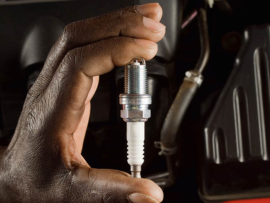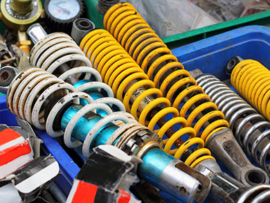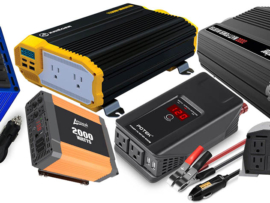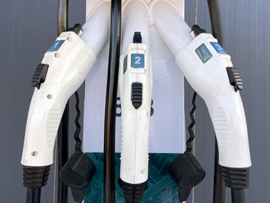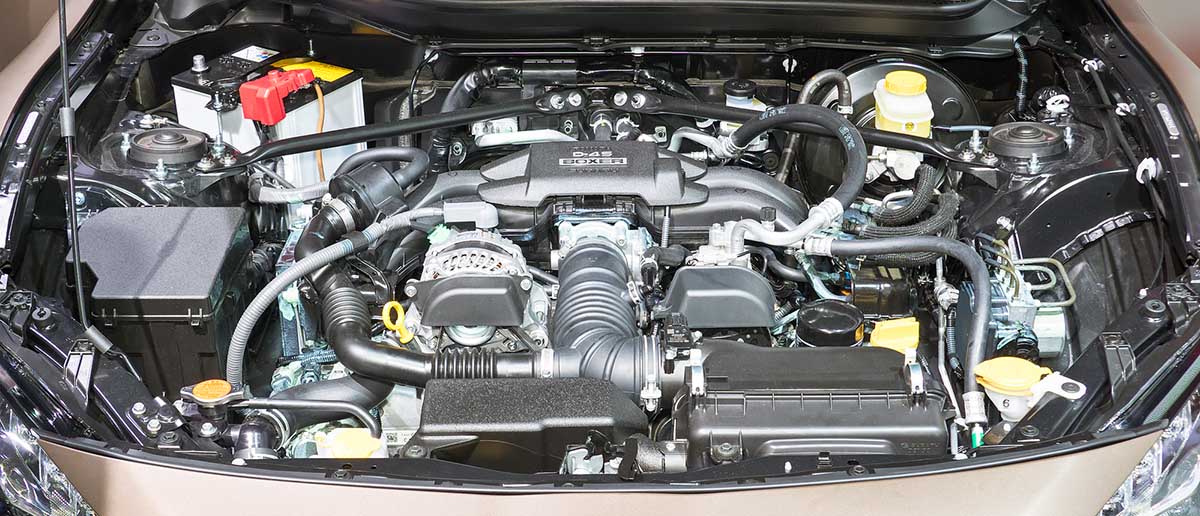
- 1. Car Engine Basics
- 2. Internal Combustion Engine
- 3. What Creates Engine Power?
- 4. Main Engine Components
- 5. Engine Stroke Cycle
- 6. Different Engine Configurations
- 7. Different Engine Configurations by Air Intake
- 8. Electric Vehicles and Hybrids
- 9. All-Electric Vehicles (EVs)
- 10. How Does an Electric Engine Work?
- 11. Hybrid Cars
- 12. Conclusions about how a car engine works
Our car is something that many of us take for granted on a daily basis unless something goes wrong. You get in, put the key in, start the engine, and start out to your destination without any thought as to the complex processes that are going on underneath the hood to make this happen. Understanding how your car engine works give us a better understanding of how to take care of it and keep it maintained. It will also help you understand your mechanic when something goes wrong. Now, let’s delve into the basics of your car.
Car Engine Basics
If you have been vehicle shopping lately, you might have run across different terms and types. You might wonder what the difference is between an inline, v-cylinder, or boxer motor. You also might wonder how a hybrid or electric motor works and how it is different from a gasoline motor.
All of these questions are things that will help you understand the terminology that is used when you are searching for a vehicle. All combustion motors have certain things in common, and the other terminology only refers to how these different components are assembled and configured. First, let’s explore some basics that apply to all combustion engines, regardless of the specific type.
Internal Combustion Engine
The internal combustion engine (ICE) is the heart and soul of the vehicle. The basic principle is that it uses the heat produced from the combustion of a fuel source to put force on some component of the engine and move it. When the fuel burns, it creates heat and gases that put pressure on the piston, turbine, blades, or rotor to move these parts over a distance. The process converts chemical energy contained in the fuel into useful work and makes the vehicle go. This is the basic principle, but let’s get into it a bit deeper.
What Creates Engine Power?

The engine power comes from a systematic process that converts a fuel source, such as gasoline, diesel fuel, ethanol, or biodiesel fuel into energy. This conversion occurs through burning the fuel in an enclosed fuel chamber. These fuels contain an incredible amount of energy that is released in the form of a gas that expands due to heat.
This energy is used to create motion and drive the working components of the ICE. There are thousands of little explosions inside your car engine every minute. This is the core principle behind your car engine. The most common type is a four-stroke, but there are other types available. The four strokes will be explained in greater detail later.
Main Engine Components
Before a discussion of the various types of engines can be explained, it is important to understand what the various components of the ICE are and what they do. Let’s start from the beginning and explore the basic parts of the car engine. There are main paths throughout the block for engine oil, fuel, and coolant.
- Engine Block.
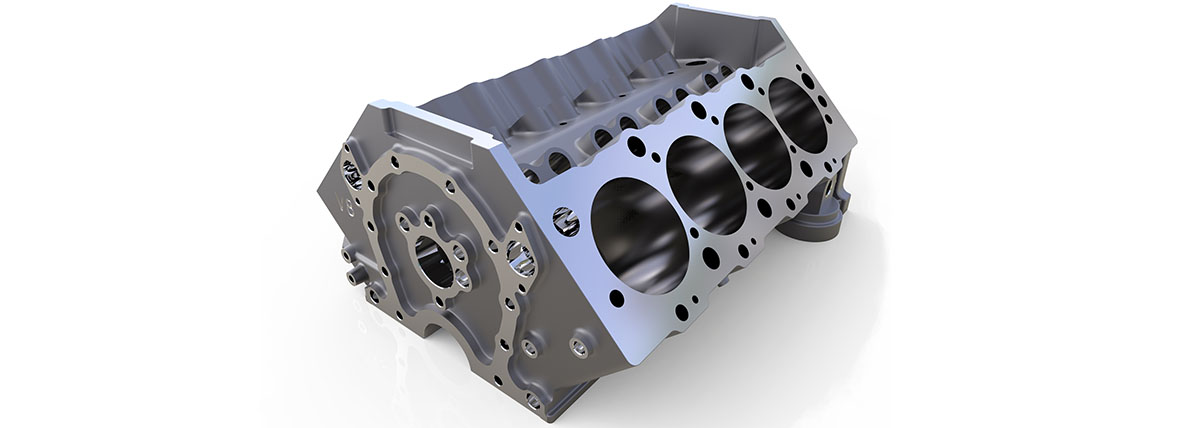
The engine block is the main part of the car engine. It is made from molten aluminum alloy or iron. It is shaped to have the number of cylinders of the engine. Typically, iron ones are only found on older ones. Most newer cars have aluminum alloy ones. The diameter of these combustion cylinder holes is called the “bore” of the car engine. It has a place for all of the pieces that need to be affixed to it. Each of the fuel combustion cylinder holes is made to accommodate a piston.
- Oil Sump.
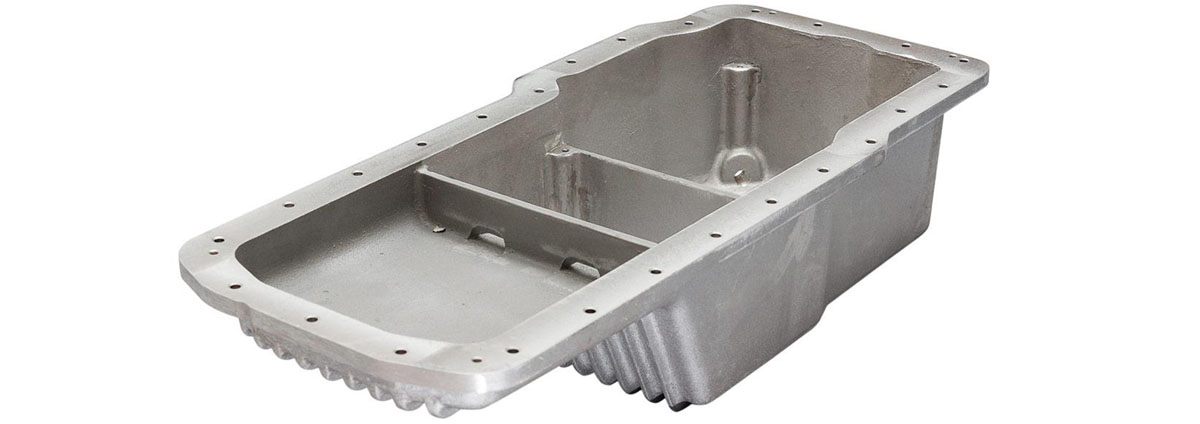
This part is a reservoir that is bolted to the bottom of the engine block. It contains the engine oil that is pumped to various parts of the vehicle’s power source by the oil pump. In some engine models, it also contains the crankshaft.
- Engine Head.
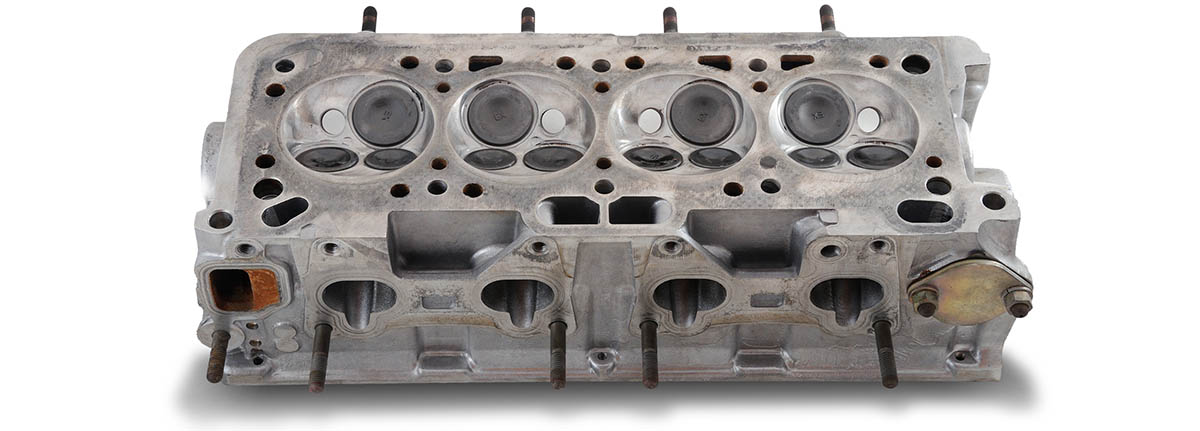
The engine head is also made from cast aluminum alloy or iron. It has an opening to allow the air required for combustion to flow in. It also has an exhaust hold for spent combustion gases to flow out. These openings are controlled by valves so that they open and close at the proper times during the stroke cycle. There is also a place for the spark plug, too. The head is attached securely to the block with four block studs. Four holes in the engine head slide over these studs using a nut assembly.
Gaskets are used to seal any potential leaks. It is a paper-like sheet that fits between the engine head and the block. This gasket keeps water and oil out of the piston shaft and keeps the air and fuel mixture from leaking out. A leaky head gasket can cause the entire vehicle to fail.
- Camshafts, valves, valve springs and tappets.

The camshaft regulates the valves and assures that they open and close at the same time. It has several cam profiles along its length that are set at different angles. Each cam profile corresponds to a valve stem. It is designed so that each valve stem is pressed in the exact timing sequence that is needed. The job of the camshaft is to press on the valve stem to close it. However, there needs to be a mechanism to return the valve to its original position to get ready for the next cycle. This system is the valve spring and tappet.
The valves control the inlet and exhaust airflow into and out of the cylinder. They are made from nickel-chromium iron alloy. They must be able to withstand high temperatures and strong forces. Each valve has two parts: a valve stem and a valve head. The valve head is bell-shaped and looks like the end of a trumpet. It has a hole in it to let out steam. The valve head faces the engine fuel combustion cylinder to create the best seal and maintain pressure.
Valve spring and tappet – through this system the valve gives the ability to exhaust the gases from cylinder and otherwise – to make intake into cylinder of fuel and air mix. When the valve is not being actively pressed by the camshaft, the valve spring and tappet system allows the valve to return to its place. The valve spring is at the top of the valve stem where it attaches to the camshaft. The tappet is a metal jacket that sits around the spring. When the camshaft pushes the valve stem down, the spring is compressed. Once the pressure is released during the engine cycle, the spring returns from its compressed state to its original length, which resets the valve position and gets it ready for the next cycle. This system is what allows the camshaft to push the valve down and then move it back up again to its original position.
- Flywheel.
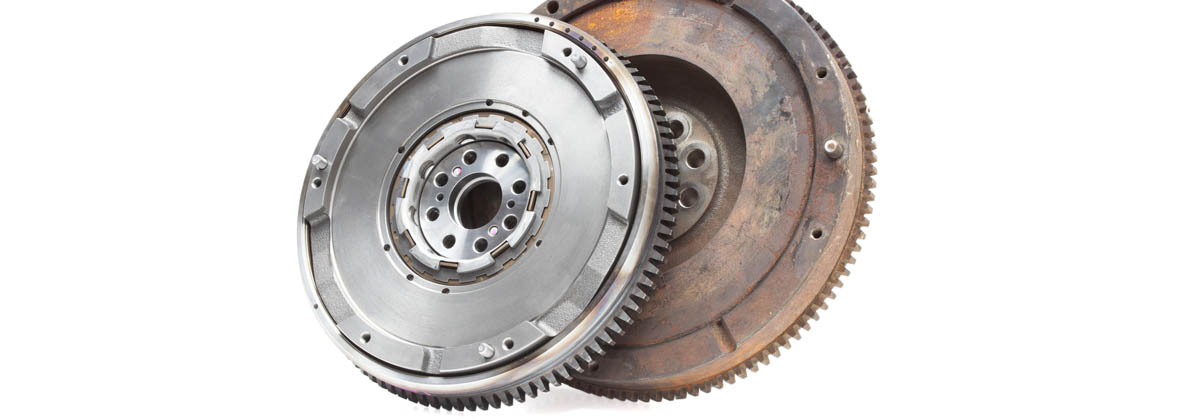
The flywheel is a heavy metal disk about 12 to 15-inches in diameter that have gear teeth cut into the outer edge. They are attached to the rear of the crankshaft. They are located between the engine and the transmission.
The flywheel serves several functions. The flywheel serves several functions. When engine is starting, the small gear is used, which is also called “Bendix” gear. When you turn the key, the starter through Bendix gear spin the flywheel, which turns the crankshaft and starts the first compression cycle. Once the engine is started, the Bendix gear is spinning back quickly till the starter disconnects from the gear of torque to the flywheel. While the car is running, the crankshaft converts the up and down motion of the pistons into a circular motion, but it’s jerky. The flywheel stores the energy and keeps the crankshaft moving smoothly between piston firings. Because the flywheel stabilizes the motion of the crankshaft, it also helps to keep other parts, such as the transmission, to experience less wear. If it were not for the flywheel, the engine would bounce and vibrate more than it does.
Different types of cars have different types of flywheels. For instance, race cars have lighter flywheels to reduce drag and achieve faster acceleration. This is also why race cars must be pushed to start. At the same time, many luxury or business-class cars has heavy dual mass flywheel, which get more comfort during engine start without shaking. But the flywheel is too light to do the job alone.
- Timing belt or chain.
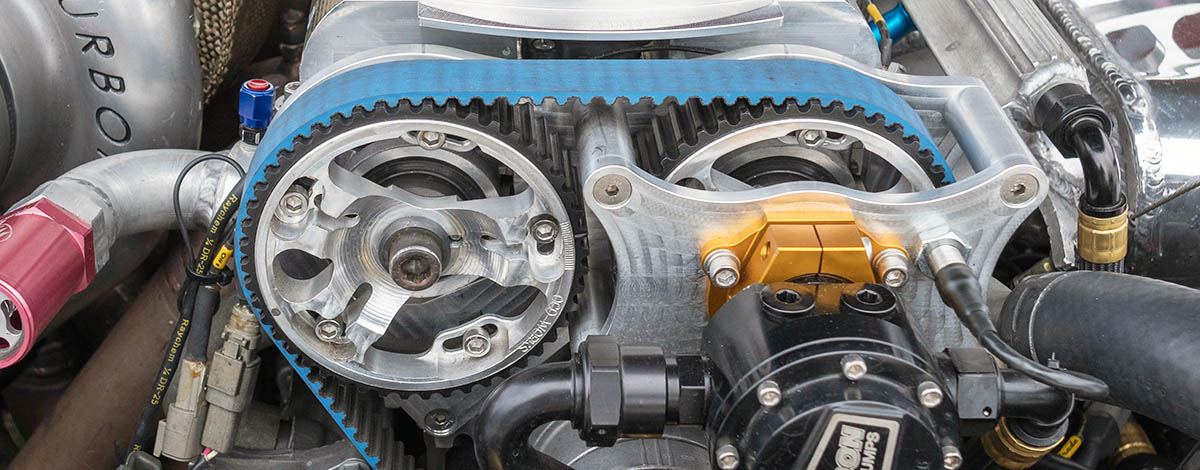
The timing belt or timing chain transmits the rotational motion from the crankshaft to the camshaft (or camshafts if they more than 1). It is a big belt that allows one engine gear to drive another one and it also uses a set of pulleys for tensioning. The camshaft typically rotates two times for every rotation of the crankshaft. The timing belt is made of glass-fiber or Kevlar because it must be made of a material that will not wear out quickly. Some engines have timing chain instead of the timing belt, it is quite more strong and “classical” construction.
- Spark plugs.
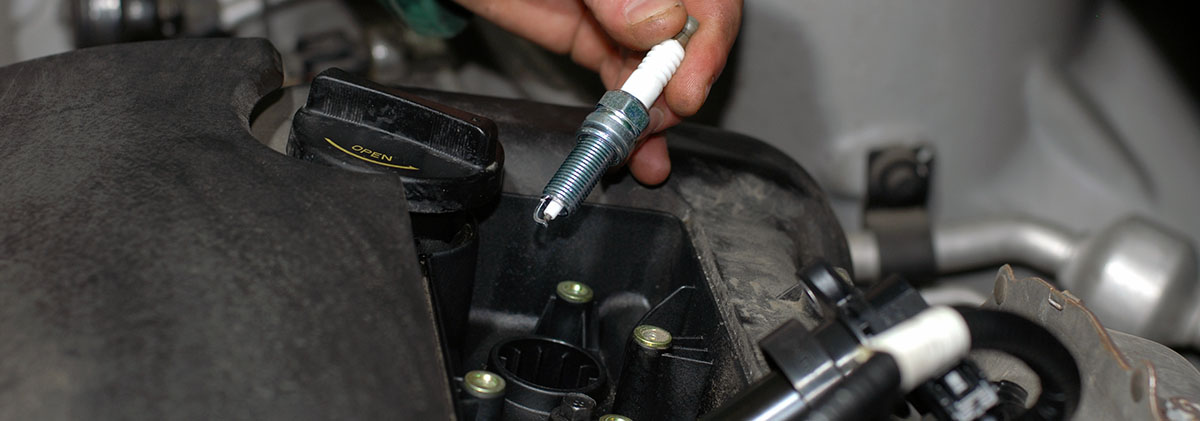
Once you get the air and fuel mixture into the cylinder, you need a spark to make it combust. The spark plug is simply a way to ignite the fuel and create the explosion that drives the piston. You might be wondering how the spark plug works. The spark plug works something like a battery. One end has a high electrical potential, and the other end has a zero or negative electrical potential. These to ends are close to each other and produce a strong electrical field between them. This field ionizes the air molecules and produces a spark. The spark occurs inside the combustion chamber and ignites the fuel. They are typically made of titanium or iridium because they must withstand high temperatures.
Engine Stroke Cycle
Now that you are familiar with the major parts of the vehicle’s power source, it is time to see how all of this fits together. You might have heard the terms “engine cycle” or “four-stroke engine”. These are terms that describe how the engine actually operates and keeps the car in motion.
The two most common types s are two-stroke engines and four-stroke engines. Two-stroke engines are typically used in small tools such as weed trimmers, lawnmowers, and chainsaws. A car uses a four-stroke engine. There are also five-stroke, and six-stroke engines, but most cars are four-stroke type. The stroke simply refers to the cycle of the engine. Let’s see what happens during each stroke of a four-stroke engine.
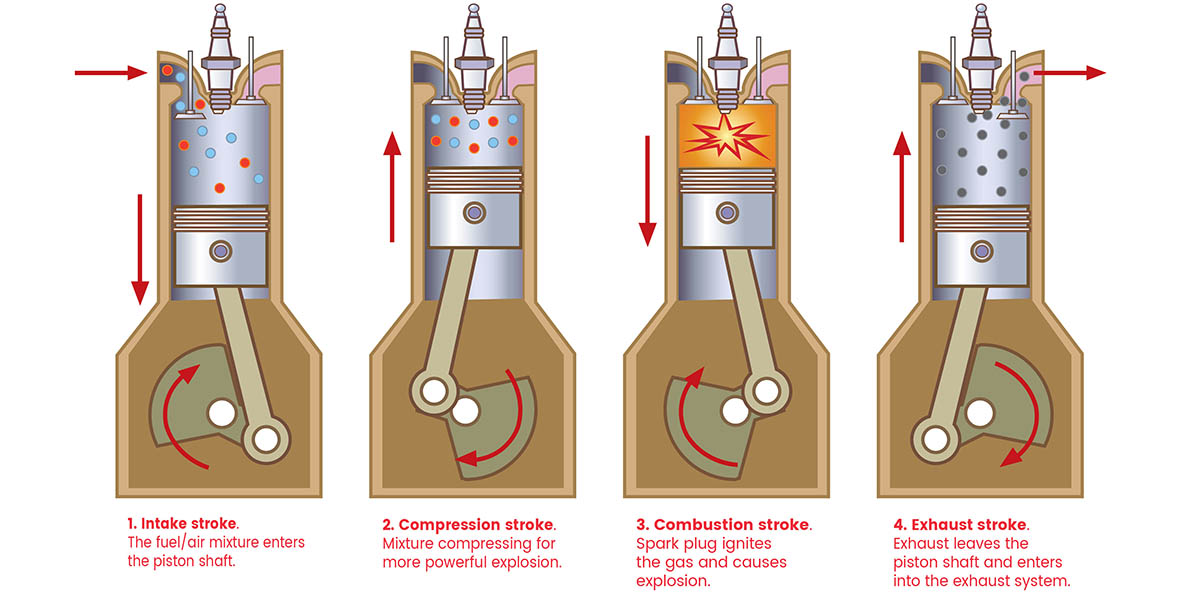
1. Intake stroke.
During the intake stroke, the piston moves downward and creates a partial vacuum in the cylinder. This draws in the fuel/air mixture. The mixture enters the piston shaft through the intake valve located at the top of the cylinder. Only a tiny bit of air needs to be mixed with the fuel.
2. Compression stroke.
Once the fuel and air are in the cylinder, the compression stroke compresses this mixture so that the combustion explosion will be more powerful. The piston moves up, compressing the mixture to the top of the cylinder.
3. Combustion stroke.
Once the piston is very close to the top of the cylinder, the spark plug ignites the gas and causes a tiny explosion. The force of this explosion drives the piston down again. This stroke is sometimes called the power stroke because this is where the vehicle’s power source gets its power.
4. Exhaust stroke.
The final stroke is the exhaust stroke. The intake valve opens, and the exhaust leaves the piston shaft and enters into the exhaust system. Now, the piston is at the bottom, ready for the camshaft to allows the next batch of fuel and air into the chamber.
Now, you understand how all of the parts work together to create the motion that powers the car. It is quite a simple process, but there is an exception to this process. A Diesel or Otto cycle type uses a different stroke cycle. If your car has direct injection, then only air enters the piston shaft during the intake stroke. Also, the position of the crankshaft is monitoring by the sensor, when engine is working.
Different Engine Configurations
Now that you know the basic parts and how they work, you might be wondering what all of those terms used by auto manufacturers mean. From supercharged to turbocharged, these terms sound good, but what do they actually mean. Let’s see if we can take some of the mystery out of these terms.
There are several types of configurations that you might see. You might see the terms, “Inline”, “V-cylinder” or “Boxer” engine when you are shopping for cars. Here are the most common engine configurations that you might encounter. You can identify the type that you have by looking at the layout of the combustion cylinders.
- Inline.
An inline engine has all of the fuel combustion cylinders arranged in a line that is perpendicular to the car. They will all be facing upwards. This is often used in smaller cars and hatchbacks.
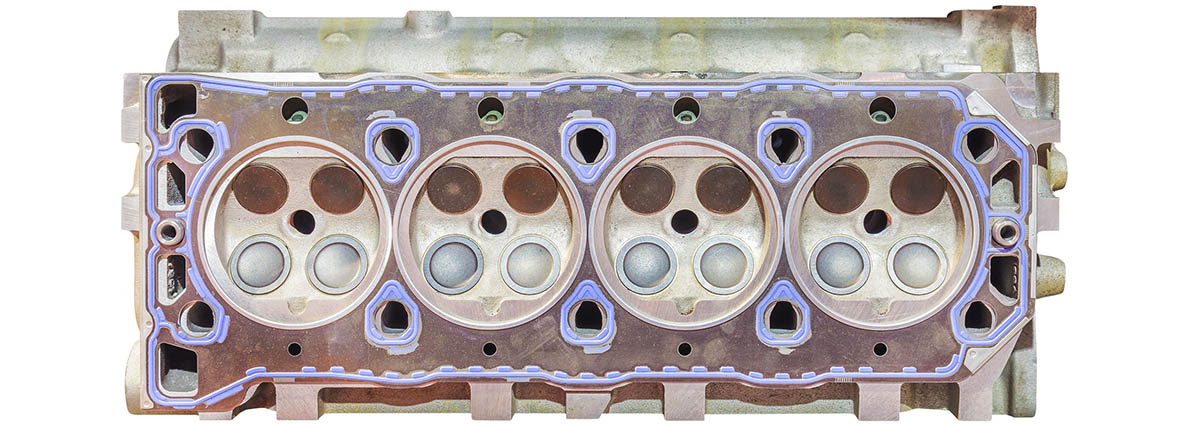
- V-cylinder.
The V arrangement, or Vee, has every combustion cylinder facing outwards at an angle in a V-shape. They will be attached to a single crankshaft at the bottom. This arrangement allows auto manufacturers to fit more cylinders into the space. It is a compact design and is often seen in high-performance vehicles and race cars.
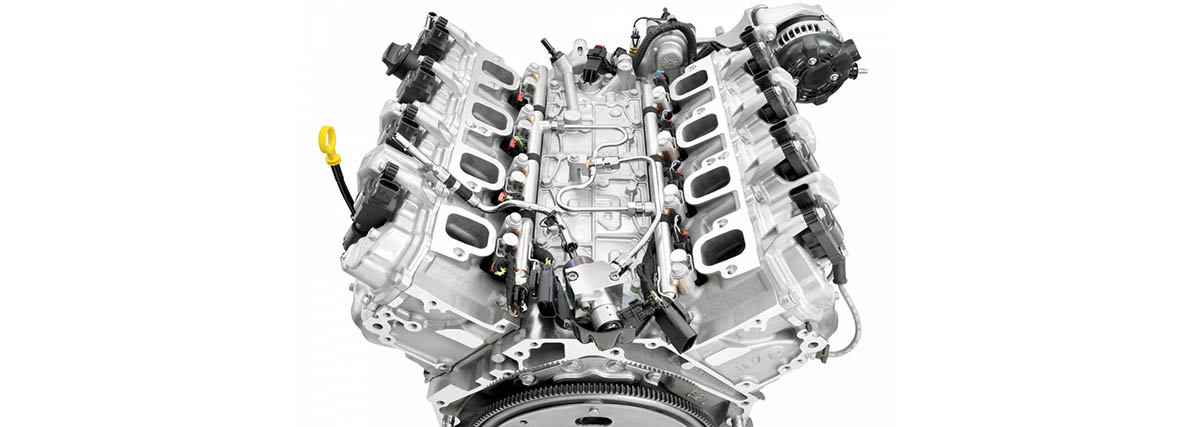
- W-cylinder.
The W or VR was developed by Volkswagen and is their claim to fame. In this configuration, the cylinders are spaced very closely together. A W configuration at the bottom joins two banks of pistons. Two pistons operate using a single combustion cylinder in the block. This configuration is rarely used today, but there are exceptions, such as the Bentley Mulsanne.

- Flat (or Boxer).
The Boxer or flat configuration is what used by Subaru, but Porsche uses it, too. It simply means that the cylinders are laid flat on their side. The two banks of cylinders face away from each other. This is efficient because the pistons are not working against gravity.
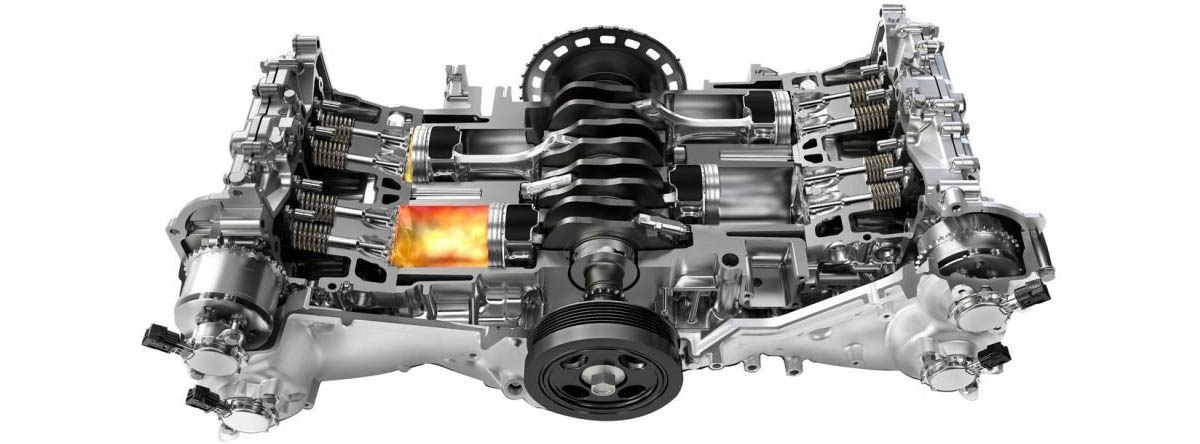
- Rotary (Wankel).
The rotary engine is also known as the Wankel engine. This type has no pistons at all. Rotors are used instead of pistons. It is compact and small. The central rotor only turns in one direction. Only a few engines use this configuration, including the Mazda RX-8.
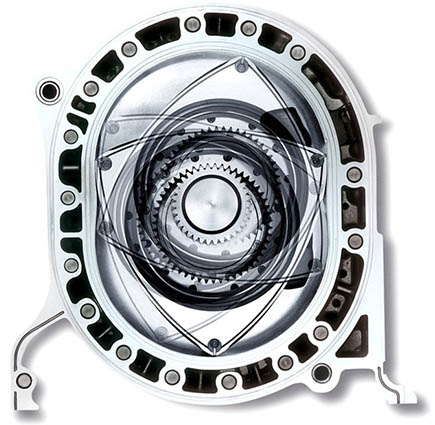
-
Straight.
You might have heard this term when talking about vintage muscle cars that have a "straight eight" engine. This means eight cylinders arranged in a line that is parallel to the car. Many types of premium cars, such as BMW, have this ICE configuration.
These are the different types of configurations found in most cars today. All of them have advantages and disadvantages. All of them also need different types and frequencies of maintenance, too.
Different Engine Configurations by Air Intake
Now you understand the different ICE configurations, but what about turbocharged and supercharged? You can classify engines according to the type of air intake system that they have, just as you can classify them according to the number and arrangement of cylinders in the block.
Naturally Aspirated Engines. First, let’s discuss the naturally aspirated engine. With a naturally aspirated engine, the air intake depends only on atmospheric pressure. The air is not forced into the combustion cylinder in any way. Many smaller engines and sports cars use naturally aspirated engines.
Auto manufacturers are now favoring smaller, more fuel-efficient engines. They must comply with tightening environmental regulations, but customers want the power that they are used to, so superchargers and turbochargers are now being added to the car engine to improve power on smaller engines.
Supercharged and Turbocharged. A supercharged or turbocharged engine uses a forced-air system that can increase the oxygen available for combustion. This increases the power output of the vehicle’s power source through more efficient fuel burning. This creates better fuel economy without sacrificing power.
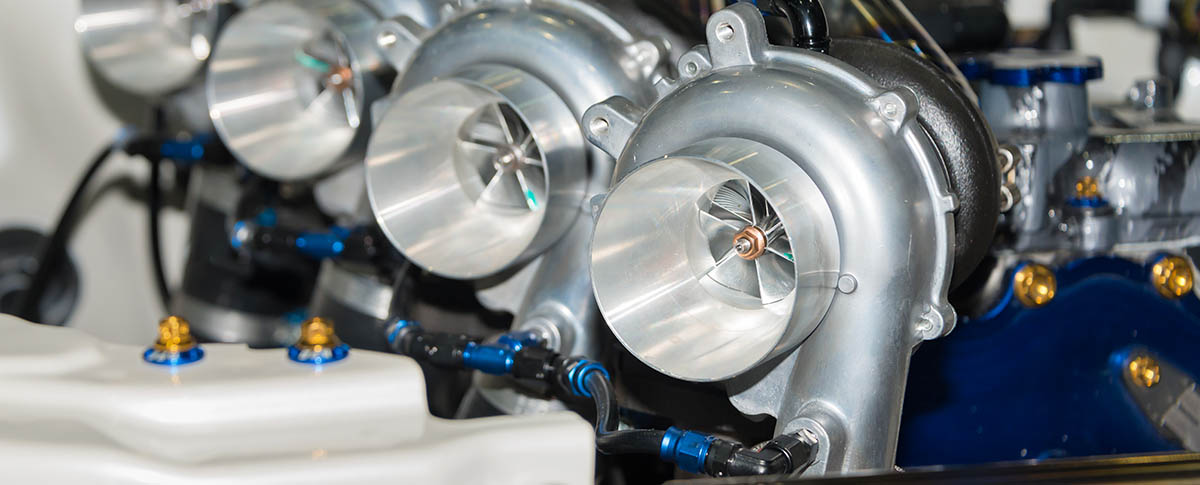
A supercharged engine uses a crankshaft to drive energy and produce power. Superchargers have their own oil system. A supercharger acts as a pump that is driven by the engine crankshaft belt. This means that it will compress the same amount of air every time, regardless of the engine speed. Since a supercharger is always on and is belt-driven, it increases the drag on the engine. This means that it can drop fuel efficiency when cruising or at low speeds.
A turbocharger is not connected to the engine and can get up to 15,000 RPMs. Turbochargers share an oil system with the car’s engine, so keeping the oil changed is important. A turbocharger is driven by exhaust gas, which creates a different output, depending on how fast they are being driven. One of the disadvantages of this type of system is that it does not deliver a boost at lower speeds. A turbocharger does not add much extra when cruising or sitting at an idle, but when you kick it into passing gear, the turbocharger kicks in with extra power.
Another disadvantage of his system is that there is a lag time before the system kicks in. This slow response is one reason why racecars use superchargers more than turbochargers.
As you can see, the type of system that you need depends on the type of driving that you do. If you are concerned about fuel economy and only need the power occasionally, a turbocharger might be the best choice. If you want to avoid the lag that occurs when the turbocharger kicks in, then a supercharger might be best, if you do not mind the extra cost in gasoline. One thing to keep in mind is that more power will also increase wear on parts like the transmission, axles, and other parts of the drive train.
Interference vs. Non-interference Engines. An interference engine has to do with the timing chain or timing belt. The last is more popular, than chain. In a non-interference engine, if the timing belt breaks, the car engine will not start. However, if you have an interference engine, the engine could suffer major internal damage if the timing belt or chain breaks.
Interference engines developed out of a need to design smaller engines, yet they get the same amount of power. They have better air intake and high compression in the cylinder. They often have larger valves and smaller combustion chambers. It the timing belt breaks on an interference engine, the pistons and valves can collide and become bent or broken. The way to avoid this is to have your timing belt or timing chain replaced at the recommended mileage for your vehicle.
Keeping your timing belt in good condition is essential in this type of vehicle. If your car have a problems, an OBD2 scanner can help fix them by determining and understanding the errors, that holds in your car’s ECU onboard memory.
Electric Vehicles and Hybrids
With gasoline prices fluctuating and a demand for more environmentally friendly options, electric cars and hybrids are becoming more popular. Hybrids have two sources of power, one is gasoline, and the other is electric. The car switches between the two systems, only using gasoline when the electric battery is low. An all-electric vehicle is a bit different and only runs on electricity without the need to fill it up with gasoline at all. Let’s explore these new options in power sources.
All-Electric Vehicles (EVs)
Since both all-electric cars and hybrids use an electric power source, we will start with an electric vehicle (EVs). To keep it simple, an EV has no gasoline power source. It uses a big battery that you must plug-in when it gets low, just like your cell phone. It does not emit exhaust and does not contain any liquid fuel. You also do not need components such as a fuel pump, fuel lines, or a fuel tank, and even fuel system cleaners aren’t required never. However, there are some parts that you need to be aware of on an EV.
- Battery. An electric vehicle has an auxiliary battery to power all of the accessories such as the stereo head unit, internet connection, electric windows, power seats, heated seats, or power sunroof.
- Charge port. The charge port is simply where you plug the charger port into the vehicle, much like the charge port on your cell phone. Only the one on an EV is bigger.
- DC/DC converter. The engine requires a higher voltage than accessories, such as the infotainment system. This converter transforms higher-voltage energy from the traction battery to the lower voltage needed to run the accessories and charge the auxiliary battery.
- Electric traction motor. This is the electric motor that drives the transmission and moves the vehicle. Some cars use separate generators to regenerate and move the vehicles, and others use only a single motor for both functions.
- Onboard charger. This charger converts AC electricity from the power source and converts it to DC power for charging the traction battery. It also monitors diagnostics like the voltage, temperature, and how much longer the charger needs to full charge. You might also be interested in L2 home chargers that sell independently from an electric vehicle.
- Power electronics controller. The controller manages the energy flow and controls the speed and torque of the engine.
- Thermal system. This is the cooling system and helps to maintain proper operating temperatures.
- Traction battery pack. This battery stores energy for use by the motor.
-
Transmission (electric). An electronic transmission serves the same function as a gasoline power source, and only it uses electronics to select and change the gears.
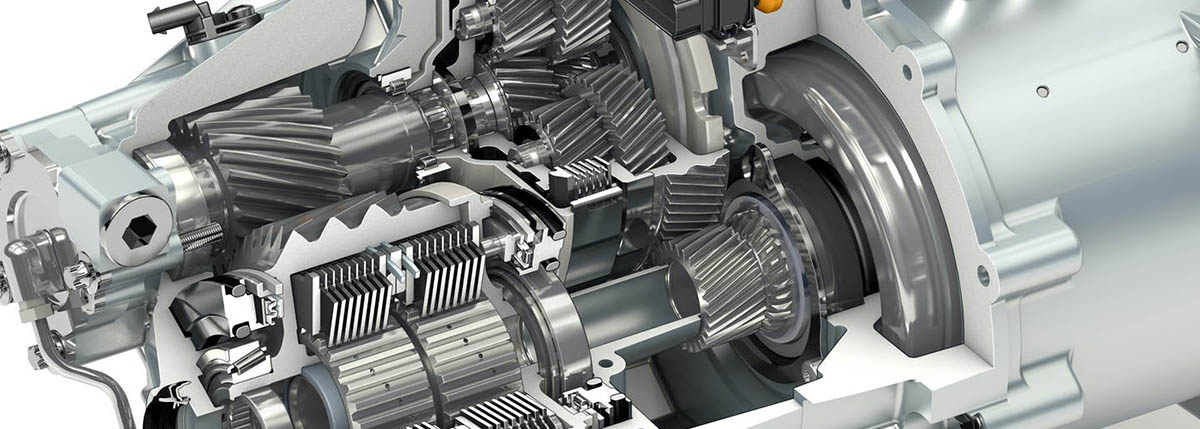
How Does an Electric Engine Work?
The next question that you might have is how an electric motor on a vehicle works, compared to the piston and combustion cylinder system of a gasoline vehicle. First off, electric motors work virtually the same, whether it is a small child’s toy that moves across the floor, a car, or a big generator that supplies power to homes.
If you were to look inside any electric motor, you would find a rotor or armature. This is the part that spins. The stator is the portion around the rotor. It holds insulated coils of copper wire. Only in rare cases are other metals used.
See also: Car Alternator Repair Cost & Fault Detection
When a current is applied to the stator, it generates an electric field. This drives the armature. This happens due to magnetics. You might remember playing with two bar magnets with opposite poles on the ends. You will remember that opposite poles attract each other and like poles push each other away. The electric more uses this principle to spin the rotor and create a circular motion. The end of the motor is then attached to the transmission and causes the rotation to cause the vehicle to move.
Hybrid Cars
You might know that hybrids are known for their fuel efficiency. An all-electric vehicle is rated by the distance that it can go on a single charge. Hybrids have an electric assist and are rated by their gasoline fuel efficiency. Although hybrids are usually listed as MPGe instead of just MPG.
A plug-in hybrid is one that plugs into a charger to store energy in the battery. The idea is that the hybrid will run on electricity for as long as possible. When the battery energy runs out, it will switch to the gasoline engine. All hybrids can run on gasoline, but then they are just a regular gasoline vehicle, and you will not see the gains in fuel efficiency.
Hybrid electrics are a bit different. You do not have to plug them in. The battery is charged through regenerative braking and by the internal combustion engine. Both plug-in hybrids and hybrid electrics have advantages and disadvantages. A hybrid electric car engine can be advantageous where there limited charging stations.
Conclusions about how a car engine works
Now, you have a basic understanding of how your car works, whether you have an internal combustion engine, an electric, or a hybrid. Hopefully, when you open up the hood, it will not just look like a jumble of metal parts. This will also give you a better understanding of the terminology used when you are buying a new car or when you have to take your car in for repairs and regular maintenance. Understanding how a car works will also make you understand why it is important to keep up with regular maintenance such as oil changes and regular servicing. We ask a lot out of our car engine, and they will last a long time with just a little bit of regular care and attention.
Sources:
1. Car engines – Explainthatstuff.com
2. How Car Engines Work – Auto.Howstuffworks.com
3. Transmission of the electric cars – The Drive
4. Electric cars – Tesla.com


